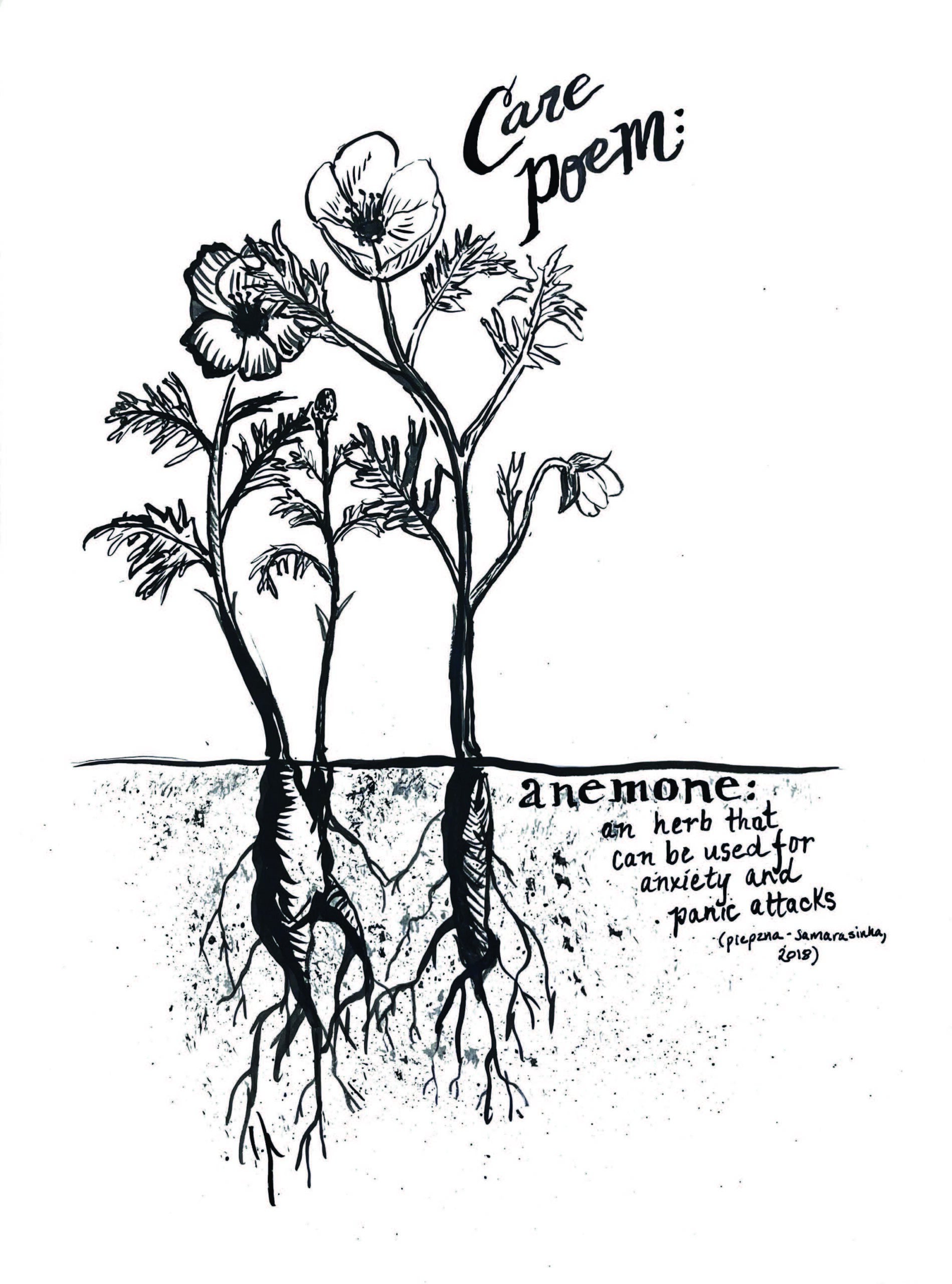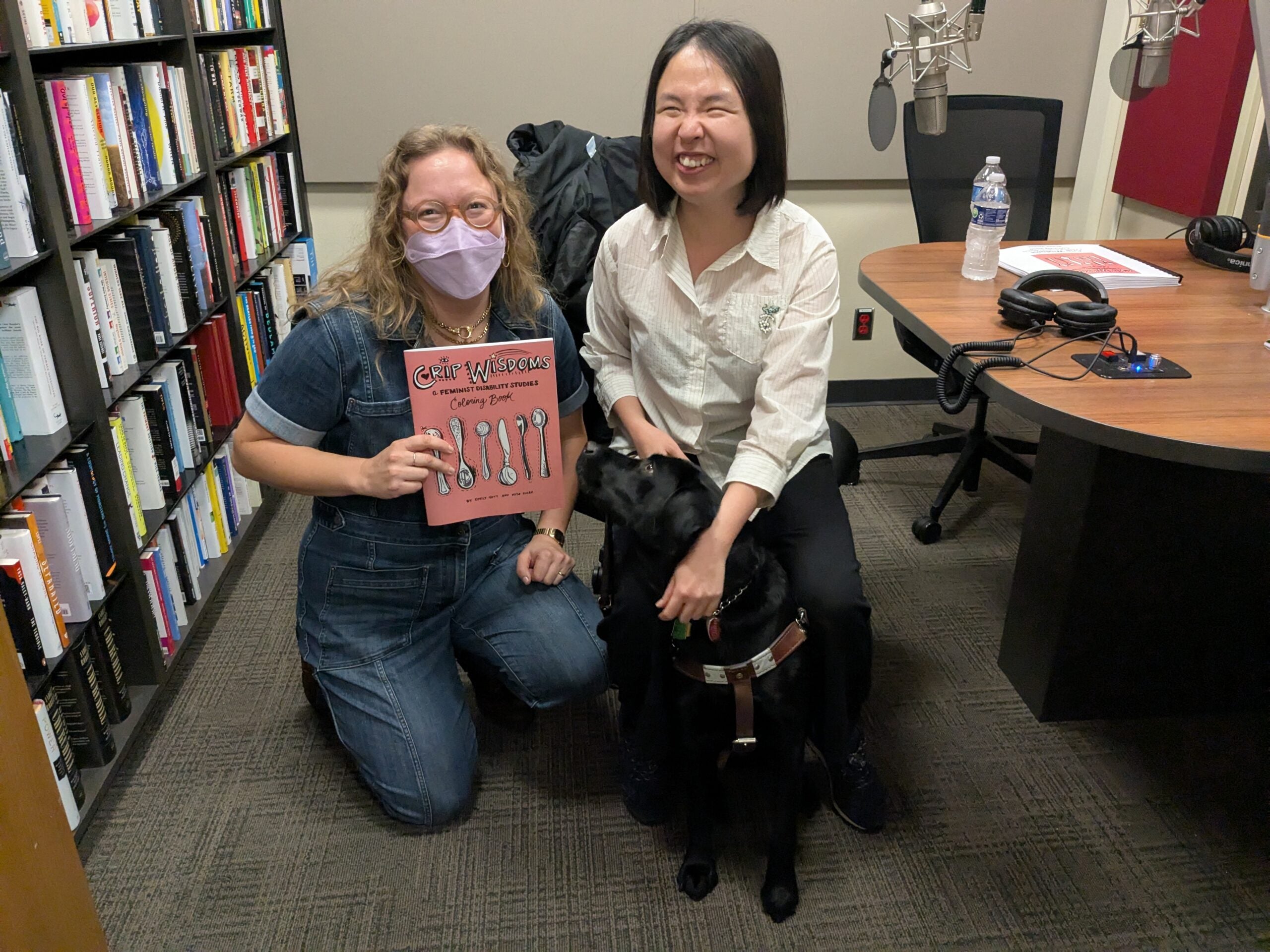Written by Richelle Wilson, Wisconsin Public Radio, November 13, 2025

For artist and educator Emily Nott, who has had chronic migraines since she was 7 years old, learning about disability justice concepts was “life-affirming.”
“Having ideas at my fingertips like spoon theory and bed activism were ways to not fold those experiences in on myself and hide them and feel shame about them,” she told WPR’s “Wisconsin Today.”
Now, Nott is sharing these ideas more widely with “Crip Wisdoms: A Feminist Disability Studies Coloring Book,” a handmade art booklet, or zine, that pairs quotes, poems and reflections on disability justice with interactive pages for writing, coloring and other activities. She created it with Miso Kwak, a fellow graduate student in the School of Education at the University of Wisconsin-Madison.
The idea got its start when Nott — who says she often finds herself transforming ideas into images in her mind — turned in a coloring page instead of a one-page reflection paper in a class she was taking with Sami Schalk.
“Thankfully, Dr. Schalk didn’t say, ‘You get an F because you were supposed to bring in a one-pager.’ She said, ‘This is beautiful. You should keep doing it,’” Nott said.
With this encouragement, Nott reached out to Kwak, a longtime friend and collaborator, to see if she would team up to make the idea a reality. Together, they worked on turning a single coloring page into an entire book — and one that would be accessible for blind readers like Kwak.
Throughout the creative process, Kwak and Nott wrote image descriptions that were vivid and went beyond the lackluster language of most alt text, the short visual descriptions used by screen readers online.
Kwak relies on image descriptions to understand photos or other visual information like maps and graphs, which are prevalent in the “sighted world,” as she and her friends call it.
“As a blind person living in a sighted world, I acknowledge and embrace the importance of images,” she said. “But access to tactile images is very few and far, unfortunately, so text is a good way for me and many blind folks to understand what image is drawn or what image is being projected.”
To create a more image-rich experience for blind readers, Nott and Kwak partnered with Clovernook Press to create an accessible braille version of the book, which includes these tactile images — raised surfaces with different patterns and textures for blind readers to feel and interpret.
“I can feel it with my hand,” Kwak said in the WPR studio, running her fingers over a page of the book and identifying a cloud and hearts. On another page, she could feel the texture of a beach with the sky overhead.
“It gives more opportunities to engage with a book in many different ways,” she said.

Each page of the zine is dedicated to a different disability justice topic like care, masking, pleasure activism and “crip time,” a term used by Wisconsin poet Ellen Samuels. The front cover shows a row of illustrated spoons, referring to the “spoon theory” of identifying units of energy among people who are disabled or have chronic illness.
Nott hopes the book can be an “on-ramp” for people to get to know and understand these concepts, some of which have been “siloed in academic spaces,” she said.
“One of my favorite parts of this book has been seeing it under other people’s hands and hearts and eyes and minds and bodies, and seeing how it transforms,” Nott said. “Getting messages from around the country of pages that have been colored or interacted with in people’s classrooms, and just seeing it come to life with other people.”
“Crip Wisdoms” is available in print, braille and as a digital PDF at the Clovernook Press website, and a large-print edition is forthcoming. Nott and Kwak are donating all profits to the Disability Visibility Project.

